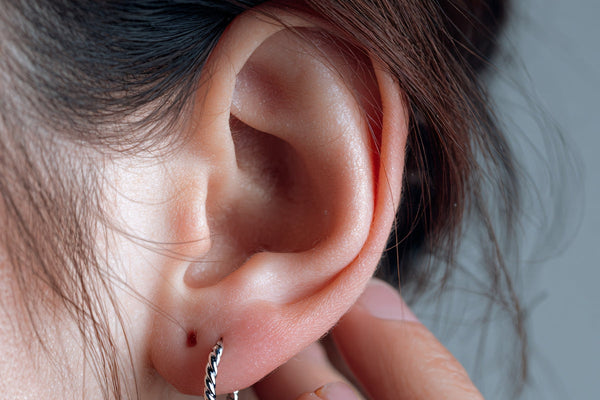
Glue ear, also known as otitis media with effusion, is a common ear condition where sticky fluid builds up behind the eardrum. This fluid can affect hearing and sometimes cause a feeling of fullness or pressure in the ear. Glue ear is most common in young children but can also affect adults, especially after colds, sinus infections, or allergies.
At Leightons, we know how worrying it can be when hearing changes suddenly. The good news is that glue ear often improves naturally, and there are simple ways to manage it. Our experienced audiologists can assess hearing, check ear health, and guide you towards the right care for your needs.
What is glue ear?
Glue ear happens when fluid collects in the middle ear, behind the eardrum. Normally, the Eustachian tube (a small canal connecting the middle ear to the back of the nose) helps equalise pressure and drain any fluid. When this tube becomes blocked or inflamed, fluid can build up instead of draining away.
This trapped fluid prevents the eardrum and tiny hearing bones from vibrating properly, making sounds seem muffled. The “glue” in glue ear refers to the thick, sticky consistency of this fluid.
Glue ear doesn’t always cause pain, so it can sometimes go unnoticed - especially in children. However, it can cause temporary hearing loss that may affect speech and communication if left unchecked.
What causes glue ear?
Glue ear can develop for several reasons, often after a cold or infection, but also due to other factors that affect drainage in the middle ear. Common causes include:
· Colds or sinus infections that cause inflammation and mucus build-up.
· Allergies, which can lead to swelling around the Eustachian tube.
· Enlarged adenoids, which can block fluid drainage (particularly in children).
· Poor air ventilation or exposure to cigarette smoke.
· Eustachian Tube Dysfunction, where pressure doesn’t equalise properly.
Children are more prone to glue ear because their Eustachian tubes are shorter and narrower, making it easier for fluid to get trapped.
Symptoms of glue ear
Symptoms of glue ear can vary depending on how much fluid has built up and how long it’s been there. Common signs include:
· Muffled or reduced hearing (often mistaken for inattention in children)
· A feeling of fullness or pressure in the ear
· Ear popping or clicking sounds
· Balance problems or clumsiness in young children
· Speech or language delays
· Mild ear discomfort (though it’s usually not painful)
If you experience these symptoms for more than a few weeks, it’s worth booking a professional ear or hearing check to rule out other causes such as wax build-up or infection.
Who is most affected?
Glue ear most commonly affects children aged 2 to 6, often following colds or viral infections. It can also appear in adults, particularly after sinus infections, allergies, or sudden air pressure changes (such as flying or diving).
In most cases, glue ear clears up naturally, but if it becomes persistent, treatment may be needed to restore normal hearing.
How is glue ear diagnosed and treated?
A professional ear examination and free hearing test are the first steps in diagnosing glue ear. At Leightons, we can assess whether fluid or pressure changes are affecting hearing.
In children, doctors often recommend a “watch and wait” approach, as glue ear frequently resolves within a few weeks. If it doesn’t improve, other treatments may include:
· Nasal sprays or decongestants to reduce inflammation
· Grommets (tiny tubes inserted into the eardrum to drain fluid and equalise pressure)
· Hearing aids to support clear hearing while fluid is present
· Managing allergies to reduce recurrence
Adults with glue ear may benefit from similar treatments, depending on the cause.
How Leightons can help
At Leightons, our audiologists can carry out ear health checks and free hearing assessments to detect glue ear or related hearing issues. We’ll take the time to explain your results clearly and, if needed, refer you to your GP or an ENT specialist for further investigation.
After treatment, we can also provide follow-up hearing tests to monitor progress and ensure your hearing returns to normal.
We’re here to support you and your family with expert, friendly care - helping you protect your hearing and feel confident in your ear health.
Book your free hearing assessment today and take the first step towards clearer, more comfortable hearing.








